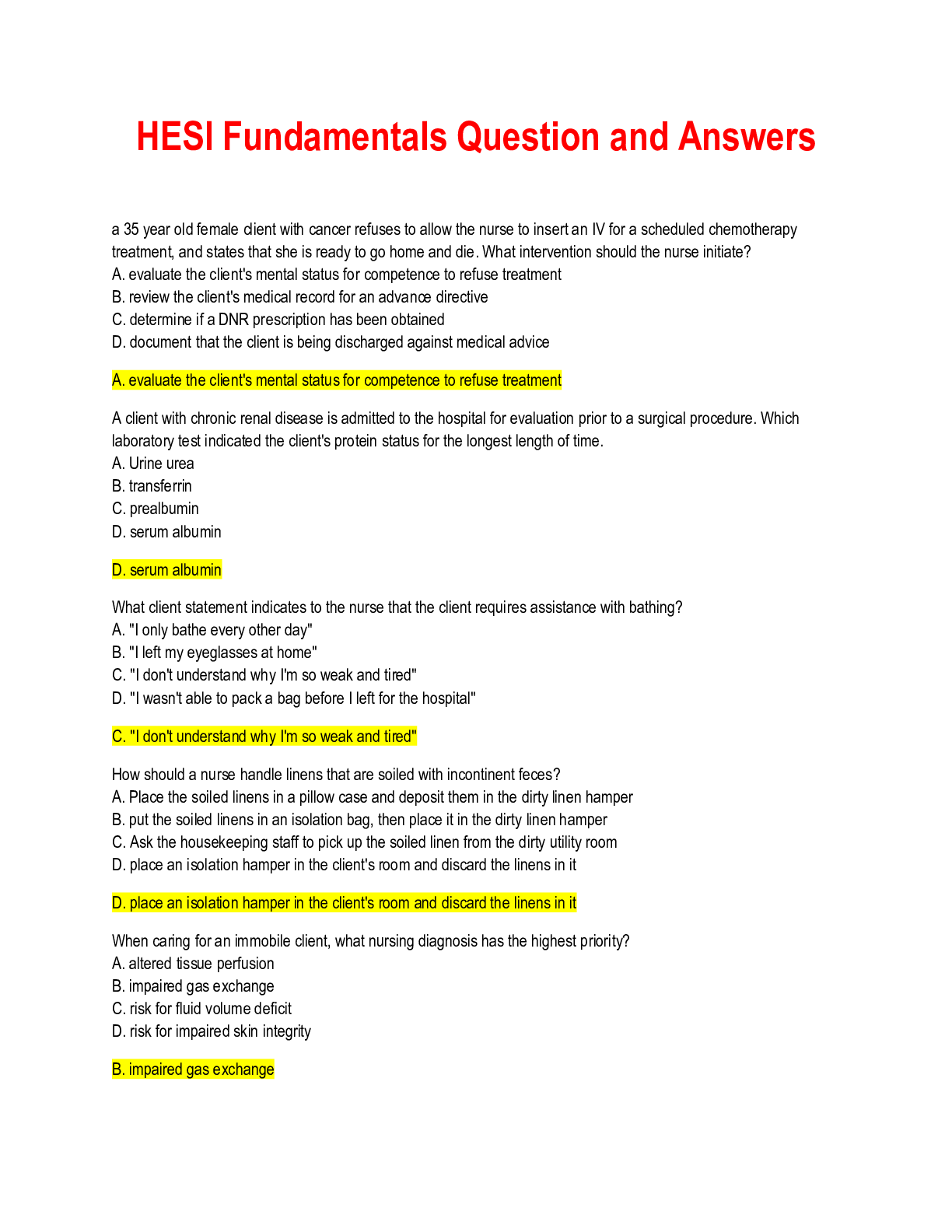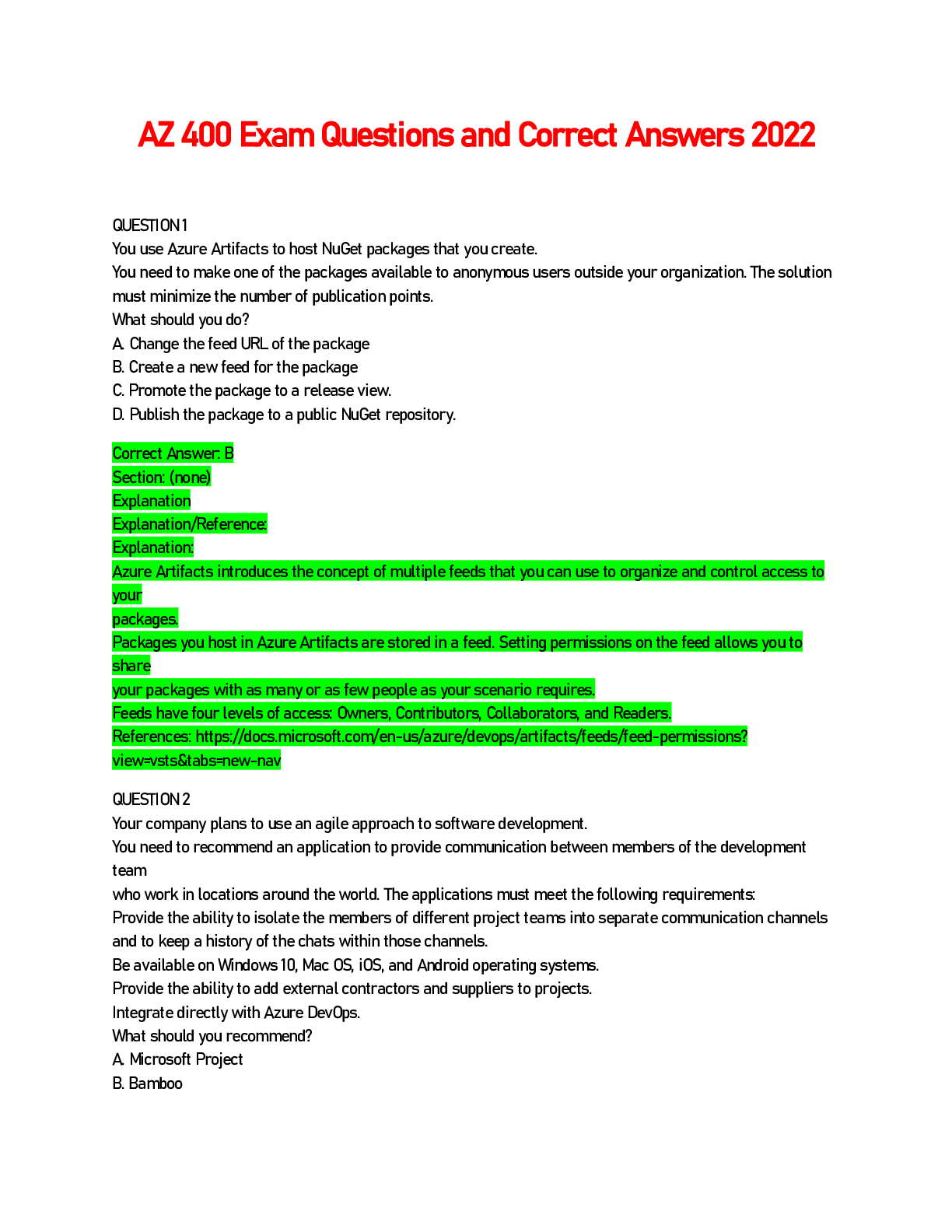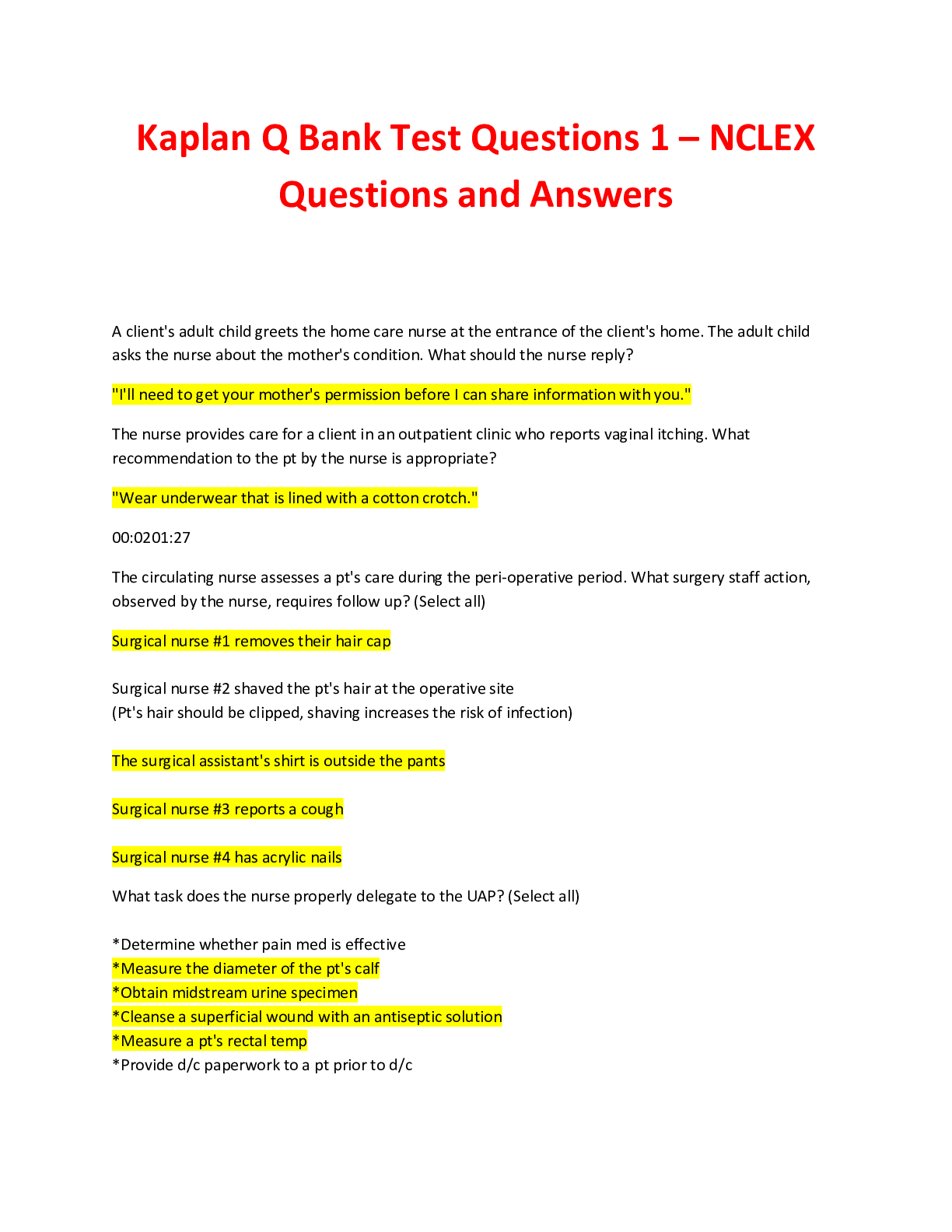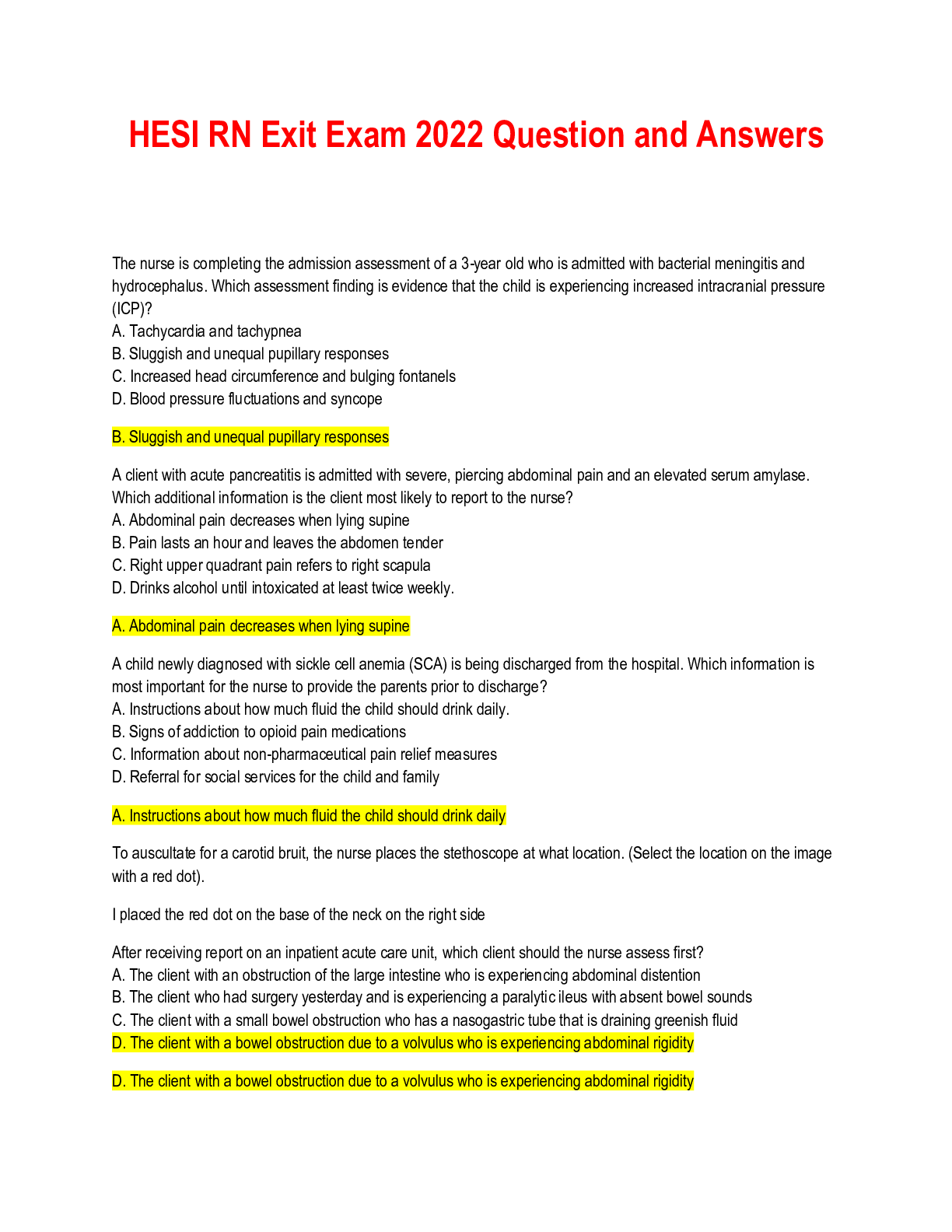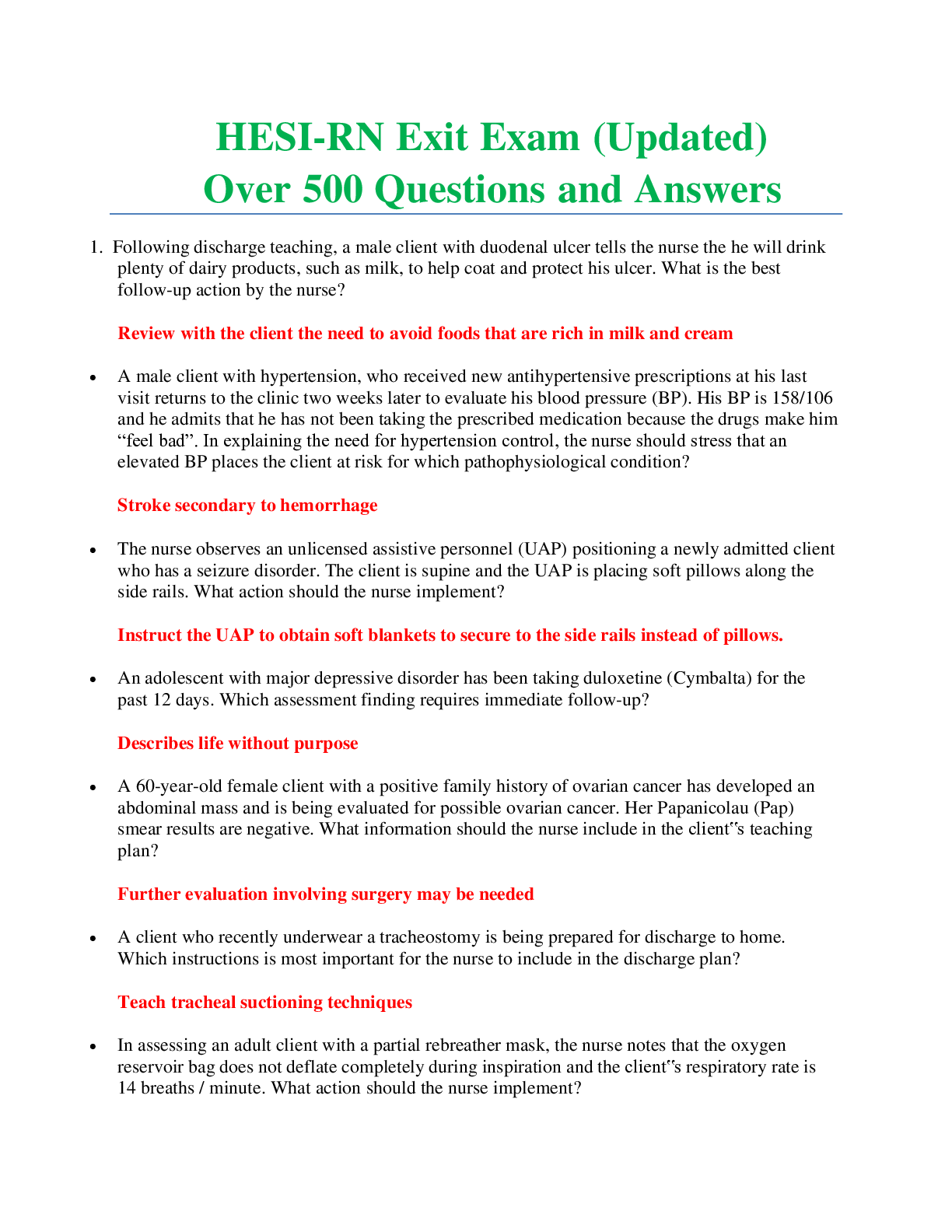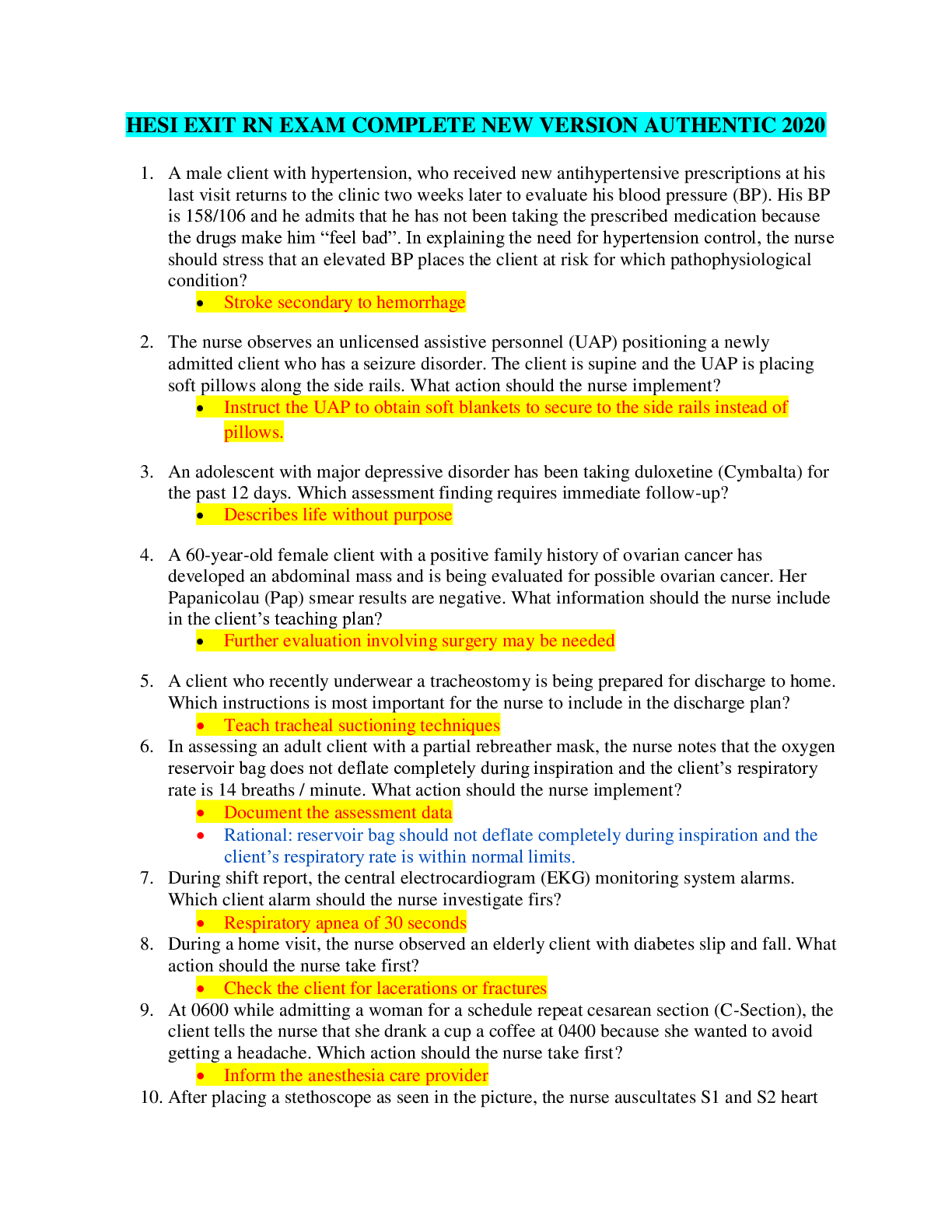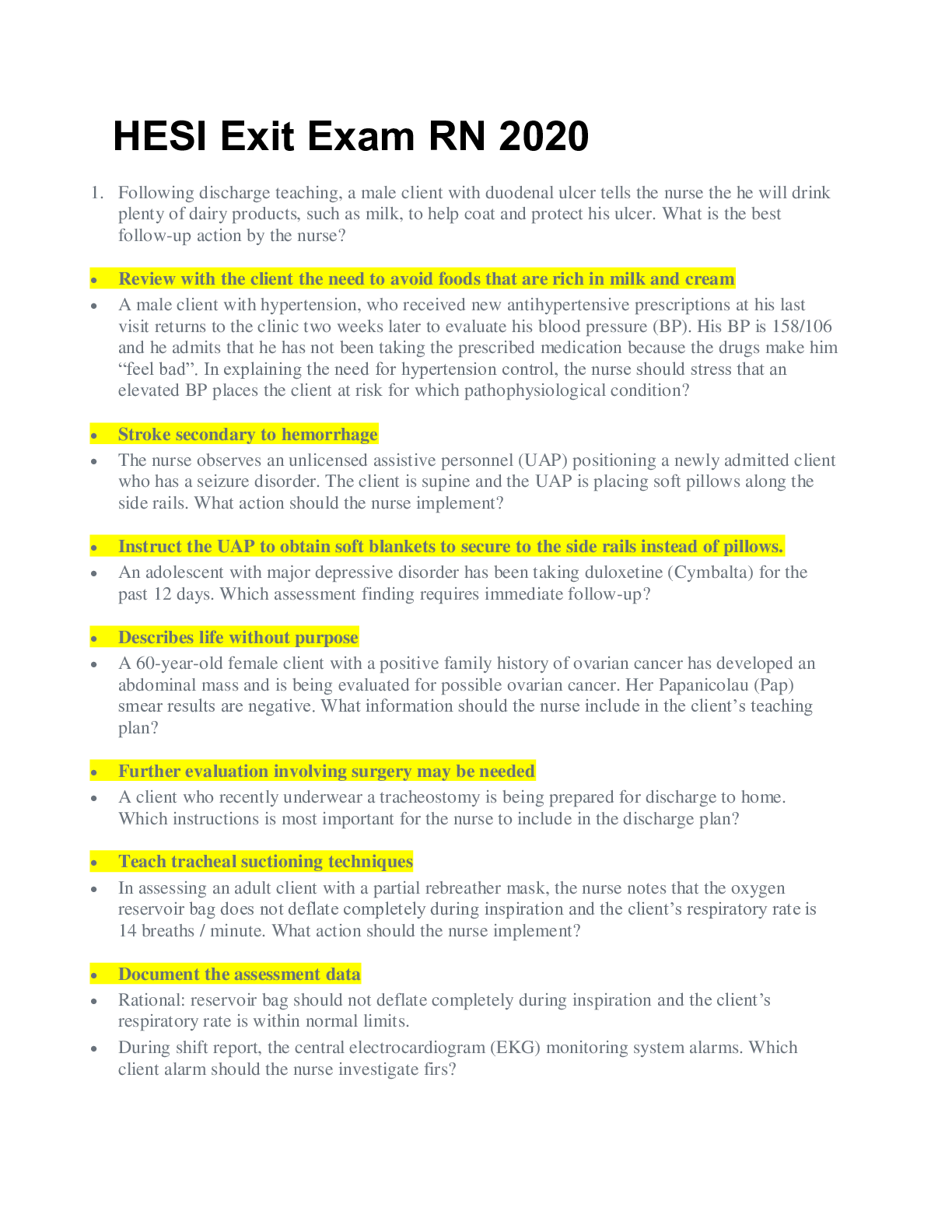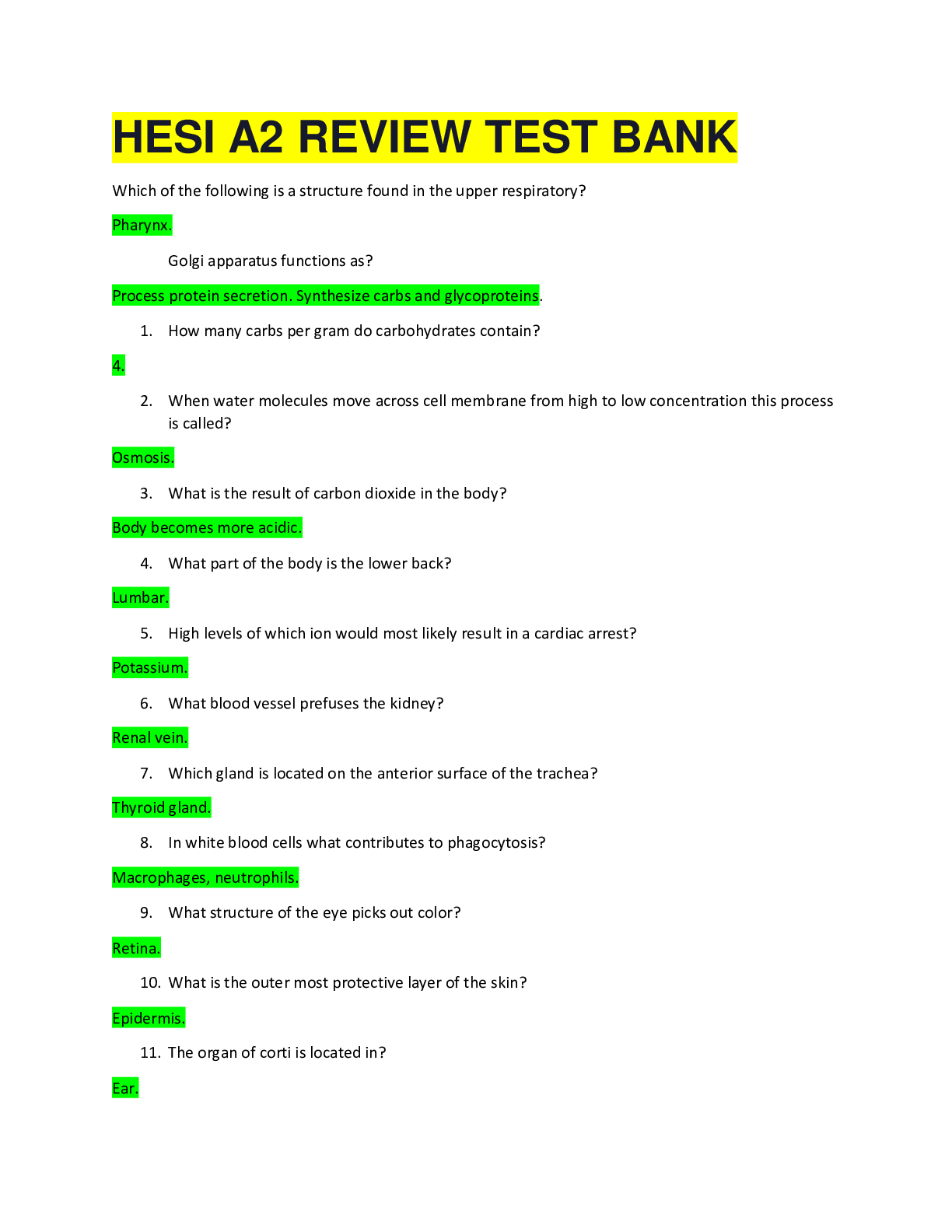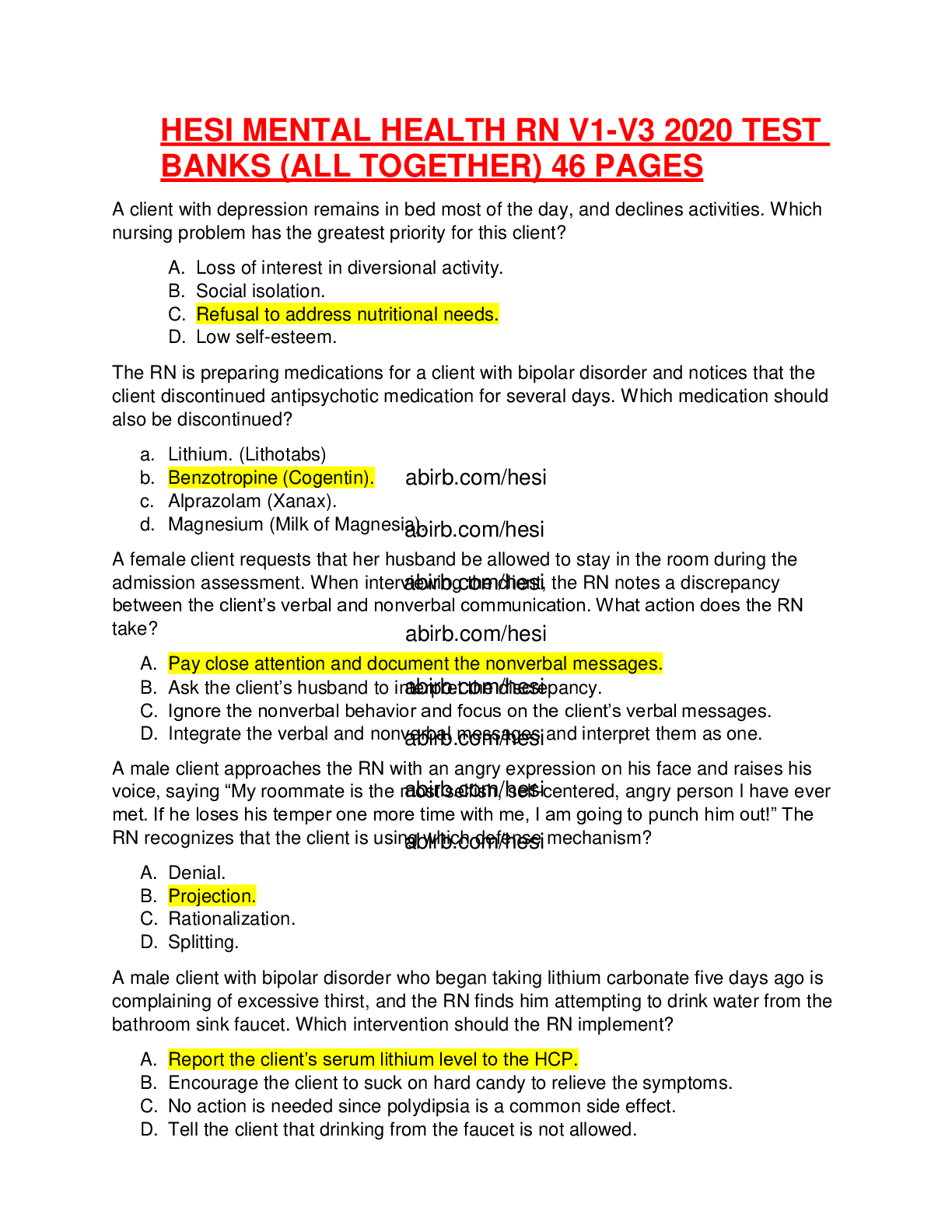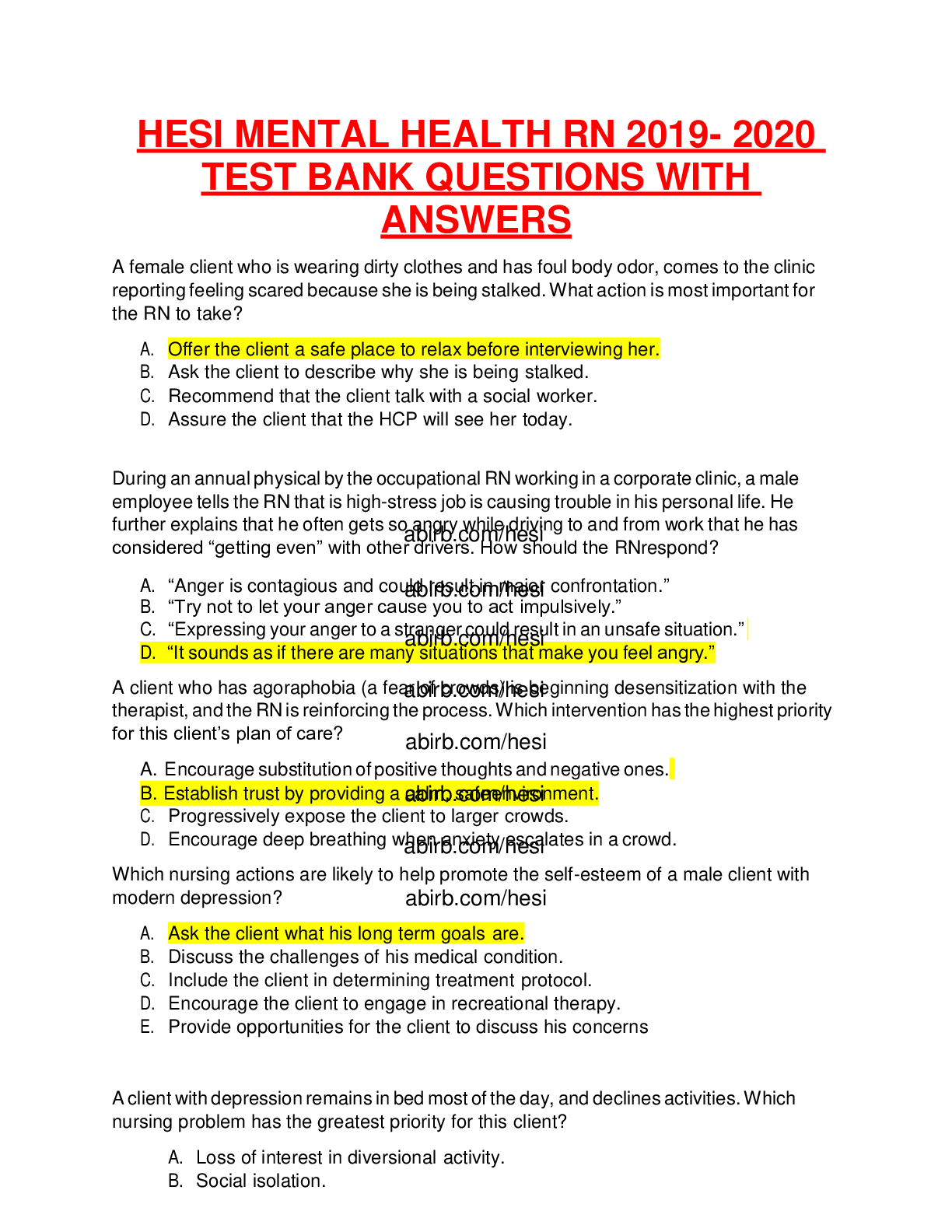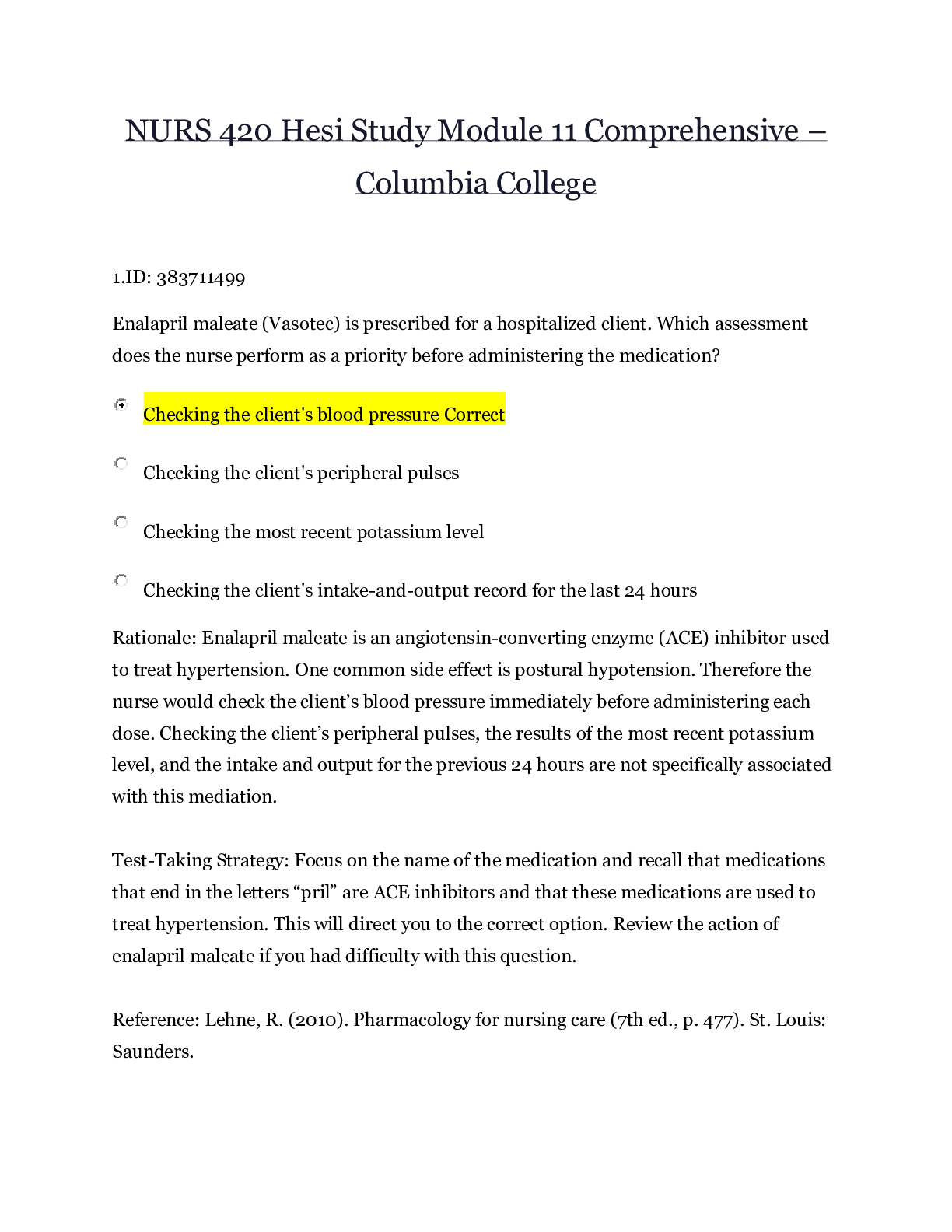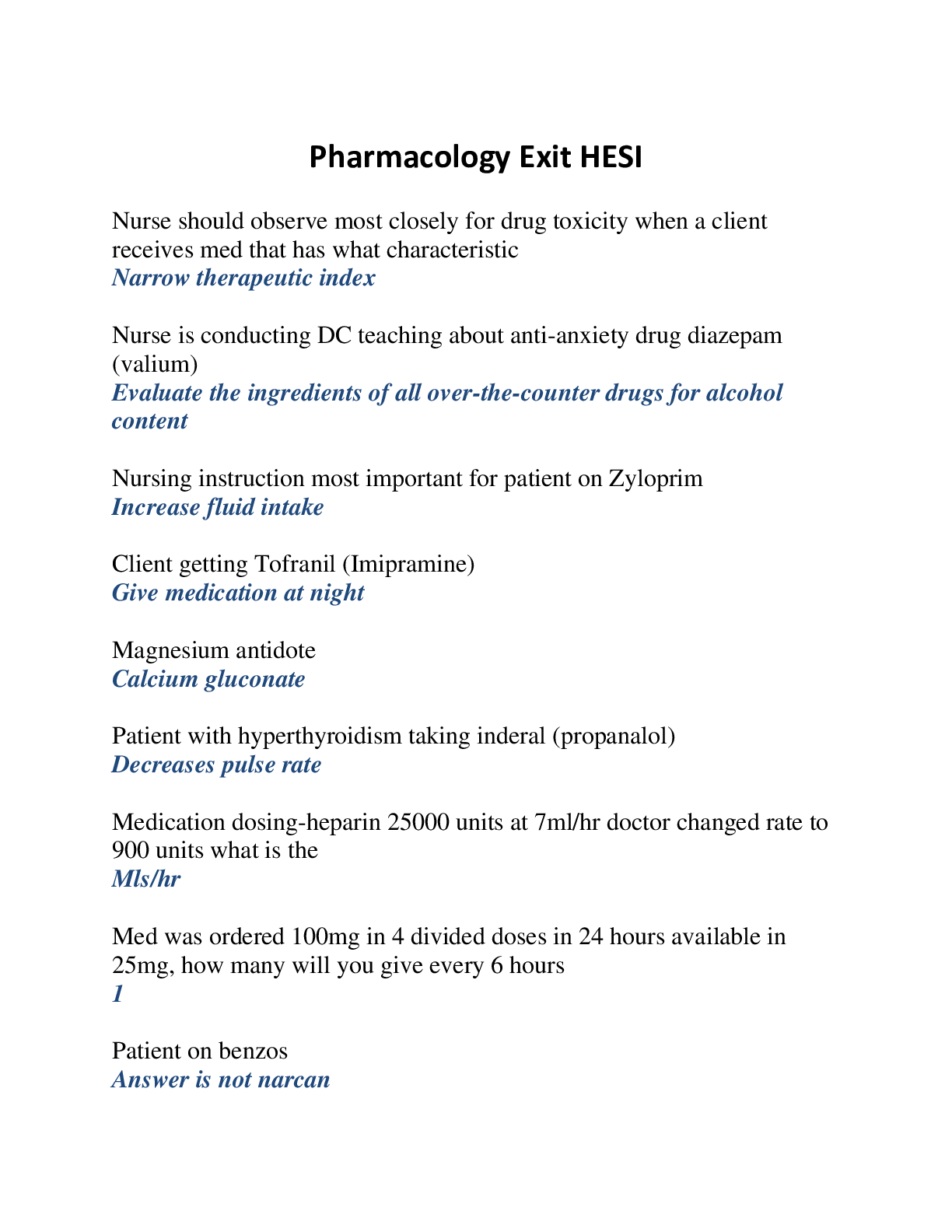HESI Fundamentals Practice Exam
Document Content and Description Below
HESI Fundamentals Practice Exam The nurse is assessing a client with dark skin who is in Respiratory Distress. Which client response should the nurse evaluate to determine cyanosis in this partic... ular client? A. Cyanosis in a client with dark skin is seen in the sclera B. Abnormal skin color changes in a client with dark skin cannot be determined C. The lips and mucus membranes of a client with dark skin are dusky in color D. Blanching the soles of the feet in a client with dark skin reveals cyanosis C. The lips and mucus membranes of a client with dark skin are dusky in color Causes of cyanosis include hypoxemia and decreased cardiac output, which provides clues to respiratory status with changes in skin color and mucous membranes. Cyanosis, a late sign of hypoxemia, is best observed in tissue that has superficial capillary supply, such as mucous membranes, the conjunctiva, lips, palms, and under the tongue, which is readily visible in dark skin Which technique should the PN use to most accurately assess a client's baseline BP during a routine health exam? A. Measure the pressure in each arm while the client sits with both arms supported at heart level B. Calculate avg BP using readings obtained in both arms C. Obtain BP first with client lying supine and then when standing D. Take additional measurements for readings with a 10 mm Hg difference A. Measure the pressure in each arm while the client sits with both arms supported at heart level BP should be taken initially in both arms while the client is seated or supine with the arm bared, supported, and positioned at the level of the heart A client with gastroenteritis, nausea, and vomiting is currently on Nothing by mouth (NPO) status. The healthcare provider prescribes oral intake to be advanced as tolerated. Which fluid should the practical nurse offer first? A. Tea B. Broth C. Water D. Soda C. Water Water or ice chips are the first choices of clear fluids for rehydration by mouth An older client who is admitted to the hospital with dehydration and electrolyte imbalance is confused and incontinent of urine. Which action provides the best strategy for the practical nurse (PN) to implement for the client's incontinence? A. Insert an indwelling urinary catheter B. Apply absorbent incontinence pads C. Restrict fluids after the evening meal D. Establish a 2-hour voiding schedule D. Establish a 2-hour voiding schedule A 2 hour voiding schedule is the best strategy for urinary incontinence management b/c it provides the client who is confused an opportunity to empty the bladder which minimizes incontinence due to overfilling Which intervention should the practical nurse (PN) implement to reduce the incidence of urinary tract infections in a client with an indwelling catheter? A. Irrigate cath with sterile distilled water B. Dilute an antiseptic solution in the perineal wash C. Cleanse perineal area with soap and water BID and PRN D. Apply an antibiotic ointment around urinary meatus BID C. Cleanse perineal area with soap and water BID and PRN Daily perineal care BID and PRN should include cleansing of the meatus and catheter junction with soap and water A male client is upset with the healthcare provider's recommendation that he should consent to an above-knee amputation. He tells the practical nurse (PN), if they want to cut off my leg, they should just shoot me instead. How should the PN respond? A. Ask the client how the surgery might effect his lifestyle B. Offer to stay with the client wile he makes his decision C. Express sympathy that there is no other choice possible D. Explain how many others function well with a prosthesis A. Ask the client how the surgery might effect his lifestyle Limb amputation alters body image and changes the client's ADLs, work, and recreational activities, which triggers a grieving process for the client. Determining the client's perception of the procedure's impact on his lifestyle is therapeutic and allows the client to explore and discuss feelings A client with cancer who has been taking opioid analgesics for two years now requires increased doses to obtain pain relief. he client expresses fear about becoming addicted to these drugs. What information should the practical nurse (PN) provide? A. Opioid use with cancer does not cause addiction B. Addiction is easily reversed if it occurs during pain management C. Prescribed opiates for cancer pain relief improves quality of life D. Opiate dosages can be tapered is a client fears addiction C. Prescribed opiates for cancer pain relief improves quality of life [Show More]
Last updated: 1 year ago
Preview 1 out of 21 pages
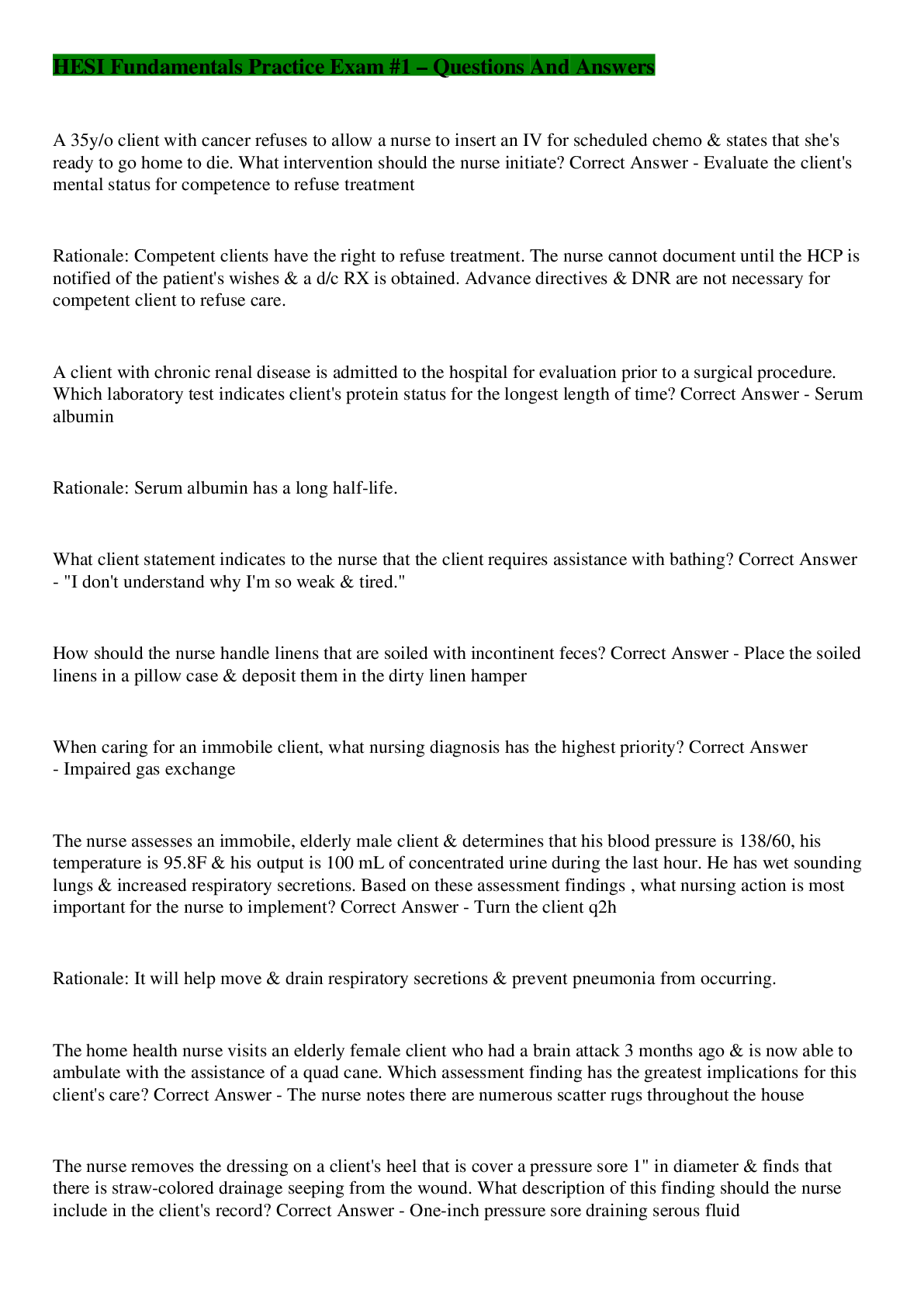
Buy this document to get the full access instantly
Instant Download Access after purchase
Add to cartInstant download
We Accept:

Reviews( 0 )
$10.00
Document information
Connected school, study & course
About the document
Uploaded On
Nov 09, 2022
Number of pages
21
Written in
Additional information
This document has been written for:
Uploaded
Nov 09, 2022
Downloads
0
Views
37


